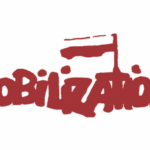Heterogeneous collective actors often select the same form of action, but there is no academic investigation into how and when this happens. This article does so focusing on direct social action, that is, a form of collective action that does not primarily focus upon claiming something from the state but instead focuses upon directly transforming some specific aspects of society.
Heterogeneous collective actors often select the same form of action, but there is no academic investigation into how and when this happens. This article does so focusing on direct social action, that is, a form of collective action that does not primarily focus upon claiming something from the state but instead focuses upon directly transforming some specific aspects of society. Building on conceptual categories developed by social movements’ scholars (context, organization, and identity) and relying on rich qualitative and quantitative data from collective actors in Italy in a time of crisis, this article identifies four paths toward direct social actions (DSA): the social path, the political-social path, the social-political path, and the political path. In doing so, our analysis shifts from the search for causal factors to the reconstruction of the dynamic, patterned sequences of events by which collective actors progress in adopting a certain form of action. The implications of these findings extend beyond studies of DSA in times of crisis in Italy, to an analysis of collective action in general. Capturing these multiple paths also has important implications for understanding how the same form of action is differently implemented and received when it is adopted by different actors.
28/10/2025

14/10/2025

Journal Article - 2025
Journal Article - 2023
Journal Article - 2023
Journal Article - 2023
Journal Article - 2023
Monograph - 2023
Monograph - 2022
Monograph - 2022
Journal Article - 2021
Journal Article - 2021